#agile scrum best practices
Explore tagged Tumblr posts
Text
With a focus on Agile principles, the Agile Scrum certification equips you with the necessary skills to effectively collaborate, adapt, and deliver high-quality projects using Agile Scrum frameworks.GSDC Certified Agile Scrum Foundation certification is designed to validate your knowledge and understanding of Agile Scrum methodologies.Agile Scrum certification demonstrates your proficiency in Agile and Scrum practices, making you a valuable asset in today's rapidly evolving business environment. The GSDC Certified Agile Scrum Foundation provides a solid foundation for individuals seeking to enhance their career prospects and contribute to the success of Agile-driven organizations.By obtaining this Agile foundation certification, you gain recognition for your expertise in Agile Scrum and become equipped to lead teams, enhance productivity, and deliver customer-centric solutions. Stay ahead in the competitive job market with the GSDC Certified Agile Scrum Foundation, the agile certification that empowers you to thrive in the ever-changing technology landscape.
#casf#certified agile scrum foundation#asf certification#agile scrum best practices#agile scrum foundation#scrum foundation exam#agile scrum foundation certification#agile scrum certification#agile and scrum foundation certification#agile#agile scrum#scrum
0 notes
Text
Unveiling the Hidden Potential of ChatGPT: How Scrum Masters can Revolutionize Agile Project Management
In the dynamic world of software development, Scrum Masters play a pivotal role in orchestrating efficient teamwork and ensuring the successful delivery of projects using the Agile Scrum framework. However, the responsibilities of a Scrum Master go beyond just facilitating meetings and removing impediments. To truly excel in their role, Scrum Masters can tap into the untapped power of AI-driven…
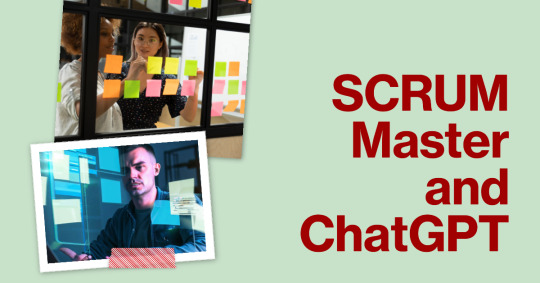
View On WordPress
#Agile Best Practices#AI in Agile Project Management#ChatGPT#Customizing Responses#Efficient Meeting Preparation#Real-time Assistance#Retrospective Analysis#Scrum Master#Task Prioritization#Team Collaboration#Time Zone Coordination
0 notes
Text
What is "Agile" anyway?
So...
I feel like my posts are best when I write about things on my mind. And because of my job, "dark agile" and "dark scrum" have been a lot on my mind. "Dark" basically is used to mean "Subversive" or "Pretending to do X, but in fact doing to opposite.
Dark design for example, refers to design that is worse for the users ( Making it harder to say no to cookies than yes for example).
But to talk about dark agile, I have to explain what agile actually is. I also want to do this because agile is super simple. But if you ever want to see a LOT of successful scamming, check out business management consulting. A LOT of people have a vested interest in making it sound a lot more complicated than it is and/or ignore what it actually is in favor of telling companies what they want to hear.
Agile is short for "Agile software development"
First, understanding the problem agile solves:
Small companies can change what they are doing, and how they are doing it really quickly. They are also very good at listening to their developers and put their good ideas into practice.
As companies grow larger, they quickly lose these abilities.
Agile, is a way to keep those abilities in a larger company. This is done by giving each development team freedom to develop however they want ( not WHATever they want ), and to give them as direct a line as possible to whoever is the decision maker for the thing they are developing, which allows them to change what they are developing very quickly, but in a way that still leaves that decision maker happy.
Or in other words, encourage worker empowerment and grassroot organization ( Can you guess why companies REALLY try hard to not actually do agile? :p )
That's it. That is agile... as in, all of it.
You can read the agile manifesto and the agile principles, which flushes out what exact values agile is trying to achieve, but you basically already have all the info
If you are thinking "But what about Scrum?", scrum is a proposed tool to achieve agile. It is not agile, nor is it part of agile. Agile is a goal. Scrum is a tool that may help a company reach that goal.
22 notes
·
View notes
Text
🚀 Understanding Scrum Roles in Vabro🚀

🚀 Understanding Scrum Roles: Scrum Master vs. Scrum Team Member (Developers) 🚀
In a Scrum project, clarity in roles is crucial for smooth collaboration and effective product development and project delivery. Let's delve into the key differences between the Scrum Master and Scrum Team Member (Developer) roles:
🛠️ Scrum Master: The Scrum Master acts as a facilitator and guardian of the Scrum process. Their primary responsibilities include:
Removing impediments: Scrum Masters actively identify and eliminate obstacles that hinder the team's progress, ensuring a smooth workflow.
Facilitating meetings: They organize and lead Scrum events such as Sprint Planning, Daily Stand-ups, Sprint Reviews, and Retrospectives to ensure adherence to the Scrum framework.
Coaching the team: Scrum Masters coach the team on Agile principles, best practices, and continuous improvement, fostering a culture of collaboration and self-organization.
👨💻 Scrum Team Member (Developers): The Scrum Team Members, also known as Developers, are responsible for delivering the product increment. Their main duties include:
Implementing user stories: Developers work together to turn user stories from the product backlog into shippable increments during each sprint.
Collaborating with the Product Owner: They engage with the Product Owner to clarify requirements, refine user stories, and ensure alignment with customer needs.
Self-organizing: Scrum Team Members autonomously plan their work, collaborate with peers, and make decisions to achieve sprint goals.
🔗 Vabro's Role-Based Access: With Vabro's role-based access functionality, teams can streamline collaboration and ensure adherence to the Scrum process flow. Whether you're a Scrum Master guiding the team or a Developer focused on product delivery, Vabro provides the tools you need to succeed in your role.
Empower your Scrum teams with Vabro's role-based access feature and unleash their full potential in Agile project management! Visit Vabro.com now. 💼✨
#Vabro#Agile#Scrum#ProjectManagement#RoleBasedAccess#ScrumMaster#Developers#Collaboration#scrumstudy
4 notes
·
View notes
Text
Demystifying the Different Types of Agile Certifications
A Beginner's Guide
Are you new to the world of Agile methodologies and wondering what all the talk about certifications is? Look no further, as this beginner's guide will break down the different types of Agile certifications and help you understand the benefits and differences between each. From Scrum and Kanban to SAF e and PMI-ACP, we will demystify the jargon and give you a clear understanding of how each certification can enhance your career and benefit your organization. Whether you're a project
Breaking Down the Different Types of Agile Certifications
Agile certifications are becoming increasingly popular in the business world as more and more companies are adopting agile methodologies With so many different types of certifications available, it can be overwhelming trying to decide which one is right for you or your team In this comprehensive guide, we will break down the different types of agile certifications and help you understand their benefits and requirements.
Firstly, let's define what agile training certification actually means Agile training refers to a specific type of education that teaches individuals about various agile practices, principles, and frameworks By obtaining an agile certification, professionals can demonstrate their knowledge and expertise in these areas.
There are several different types of agile certifications available depending on the specific methodology or framework being used The most common ones include Scrum Master Certification (SMC, Certified Scrum Product Owner (CSPO, Agile Certified Practitioner (ACP, Lean Six Sigma Green Belt (LSSGB and Professional Scrum Master )
Each certification has its own unique set of requirements such as attending a certain number of hours in training sessions or passing an exam with a minimum score It is important to carefully research each certification before deciding which one best fits your needs and goals.
The benefits of obtaining an agile certification are numerous First and foremost, it demonstrates to employers that you have a solid understanding of the principles behind agility and possess valuable skills that can contribute to successful project execution It also sets you apart from other candidates when applying for jobs or promotions within your company.
Additionally, getting certified shows commitment to continuous learning and improvement in your career field which is highly valued by employers Having an official recognition from a reputable organization also adds credibility to your resume which can lead to higher salary potential.
In conclusion, there are many factors to consider when choosing the right type of agile certification for yourself or your team members including cost, time commitment required for completing the program, specific skill-set needs within your industry etc. It is important to carefully research and understand each certification before making a decision The benefits of being certified can greatly impact your career growth and open up new opportunities With this comprehensive guide, we hope you have gained a better understanding of the different types of agile certifications available and can make an informed decision in your pursuit towards becoming an expert in agile methodologies
2 notes
·
View notes
Text

Scrum is a Project Management framework that breaks a large Epic into small tasks. Scrum helps with increased ROI for projects, it can be scaled to include large projects and enterprises. Scrum Tools like Jira, Vabro, Monday.com etc, helps these teams to deliver projects at the earliest with most value and efficiency. Vabro helps manage these projects while assisting the development team to streamline the delivery of projects.
Features of Vabro:
Vabro, a comprehensive Scrum tool, offers a wide array of features designed to streamline Agile project management and enhance team collaboration. Here's an overview of these features:
Portfolios: Vabro allows users to organize multiple projects into portfolios, providing a high-level view of all ongoing initiatives within an organization.
Programs: Within portfolios, Vabro enables the grouping of related projects into programs, allowing for better coordination and alignment of efforts across teams.
Projects: Users can create individual projects within Vabro, each representing a specific initiative or deliverable, with its own set of tasks, timelines, and objectives.
Teams: Vabro facilitates team management by allowing users to define and assign team members to projects, ensuring clear accountability and collaboration.
Release: Vabro helps teams plan and manage software releases by providing tools for organizing and scheduling releases, tracking progress, and coordinating release activities.
Sprint: Vabro supports Agile development methodologies by enabling teams to plan and execute sprints, with features for backlog grooming, sprint planning, and sprint review.
Prioritized Product Backlog: Vabro includes a prioritized product backlog where user stories and tasks are listed based on their importance and business value, allowing teams to focus on delivering the most valuable features first.
Scrumboard: Vabro offers a customizable Scrumboard that provides a visual representation of the project's workflow, allowing teams to track the status of user stories and tasks as they move through different stages of development.
Files, Links & Comments: Vabro allows users to attach files, links, and comments to user stories, tasks, and other project artifacts, facilitating communication and collaboration among team members.
Dependency: Vabro supports managing dependencies between user stories, tasks, and projects, helping teams identify and resolve dependencies to ensure smooth project execution.
Basic Filters and Advanced Filters: Vabro provides both basic and advanced filtering options, allowing users to quickly search and sort project data based on various criteria, such as status, assignee, or priority.
Team Management: Vabro offers tools for managing team members, including roles and permissions, user profiles, and resource allocation, to ensure efficient collaboration and utilization of team resources.
Epic: Vabro allows users to create epics, which represent large bodies of work that can be broken down into smaller, manageable user stories, helping teams to plan and track progress more effectively.
User Stories and Tasks: Vabro supports Agile project management by allowing teams to create user stories, break them down into tasks, and track progress towards completing them.
Overall, Vabro provides a comprehensive set of features to support Agile project management, enabling teams to plan, execute, and deliver high-quality software products efficiently and collaboratively.
Join us on this exciting journey of elevating your project management experience. Visit www.vabro.com to learn more about Vabro and how it can transform the way your team works! Stay tuned for more insights and best practices on Scrum and Agile methodologies.
3 notes
·
View notes
Text
Project Success: Managing with PRINCE2 Agile Practitioner
Introduction:
In the ever-evolving landscape of project management, staying agile and adaptable is key to achieving success. One methodology that seamlessly blends the structure of PRINCE2 with the flexibility of Agile is the PRINCE2 Agile Practitioner approach. In this blog, we will explore the fundamentals of PRINCE2 Agile Practitioner and understand how it can enhance project outcomes.
Understanding PRINCE2 Agile:
PRINCE2 (PRojects IN Controlled Environments) has long been a go-to framework for project management, providing a structured and systematic approach. On the other hand, Agile methodologies prioritize flexibility, collaboration, and iterative development. PRINCE2 Agile Practitioner brings these two worlds together, creating a powerful synergy that addresses the challenges faced by project managers in dynamic environments.
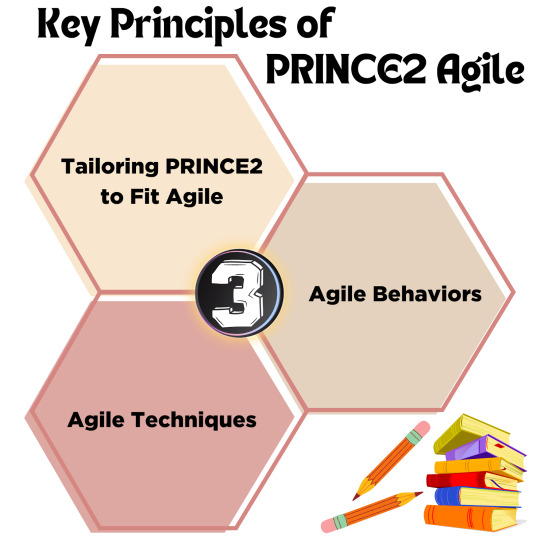
Key Principles of PRINCE2 Agile:
1. Tailoring PRINCE2 to Fit Agile:
PRINCE2 Agile Practitioner allows for tailoring traditional PRINCE2 processes to accommodate Agile practices. This ensures that the methodology is not overly prescriptive, providing room for Agile teams to thrive.
2. Agile Behaviors:
The framework promotes the adoption of key Agile behaviors, such as transparency, collaboration, and frequent feedback. This helps in fostering a culture that values adaptability and embraces change.
3. Agile Techniques:
PRINCE2 Agile Practitioner introduces a range of Agile techniques, including Scrum, Kanban, and Lean Startup, among others. This allows project managers to select the techniques that best suit the project's context and requirements.
Benefits of PRINCE2 Agile Practitioner:
1. Enhanced Flexibility:
The combination of PRINCE2 and Agile provides a structured approach while allowing for flexibility in adapting to changing project dynamics. This ensures that projects can evolve in response to customer needs and market trends.
2. Improved Communication and Collaboration:
The Agile emphasis on communication and collaboration is integrated into PRINCE2 Agile, fostering a more engaged and transparent project environment. This leads to better team cohesion and improved decision-making processes.
3. Reduced Risk:
By incorporating Agile techniques for risk management, such as early and frequent testing, PRINCE2 Agile Practitioner helps identify and mitigate risks proactively. This ultimately minimizes the chances of project failure.
4. Continuous Improvement:
PRINCE2 Agile Practitioner encourages a mindset of continuous improvement through regular retrospectives and feedback loops. This iterative approach ensures that lessons learned are incorporated into future project phases, enhancing overall project performance.
Conclusion:
In the fast-paced world of project management, the PRINCE2 Agile Practitioner approach stands out as a versatile and effective methodology. By combining the best of both PRINCE2 and Agile, this framework empowers project managers to navigate complexity, respond to change, and deliver successful outcomes. As organizations increasingly seek adaptable and responsive project management approaches, the PRINCE2 Agile Practitioner emerges as a valuable tool for achieving project success.
3 notes
·
View notes
Text
Full Stack Development: Using DevOps and Agile Practices for Success
In today’s fast-paced and highly competitive tech industry, the demand for Full Stack Developers is steadily on the rise. These versatile professionals possess a unique blend of skills that enable them to handle both the front-end and back-end aspects of software development. However, to excel in this role and meet the ever-evolving demands of modern software development, Full Stack Developers are increasingly turning to DevOps and Agile practices. In this comprehensive guide, we will explore how the combination of Full Stack Development with DevOps and Agile methodologies can lead to unparalleled success in the world of software development.
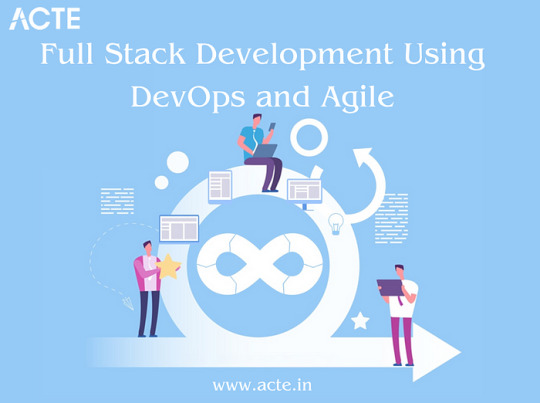
Full Stack Development: A Brief Overview
Full Stack Development refers to the practice of working on all aspects of a software application, from the user interface (UI) and user experience (UX) on the front end to server-side scripting, databases, and infrastructure on the back end. It requires a broad skill set and the ability to handle various technologies and programming languages.
The Significance of DevOps and Agile Practices
The environment for software development has changed significantly in recent years. The adoption of DevOps and Agile practices has become a cornerstone of modern software development. DevOps focuses on automating and streamlining the development and deployment processes, while Agile methodologies promote collaboration, flexibility, and iterative development. Together, they offer a powerful approach to software development that enhances efficiency, quality, and project success. In this blog, we will delve into the following key areas:
Understanding Full Stack Development
Defining Full Stack Development
We will start by defining Full Stack Development and elucidating its pivotal role in creating end-to-end solutions. Full Stack Developers are akin to the Swiss Army knives of the development world, capable of handling every aspect of a project.
Key Responsibilities of a Full Stack Developer
We will explore the multifaceted responsibilities of Full Stack Developers, from designing user interfaces to managing databases and everything in between. Understanding these responsibilities is crucial to grasping the challenges they face.
DevOps’s Importance in Full Stack Development
Unpacking DevOps
A collection of principles known as DevOps aims to eliminate the divide between development and operations teams. We will delve into what DevOps entails and why it matters in Full Stack Development. The benefits of embracing DevOps principles will also be discussed.
Agile Methodologies in Full Stack Development
Introducing Agile Methodologies
Agile methodologies like Scrum and Kanban have gained immense popularity due to their effectiveness in fostering collaboration and adaptability. We will introduce these methodologies and explain how they enhance project management and teamwork in Full Stack Development.
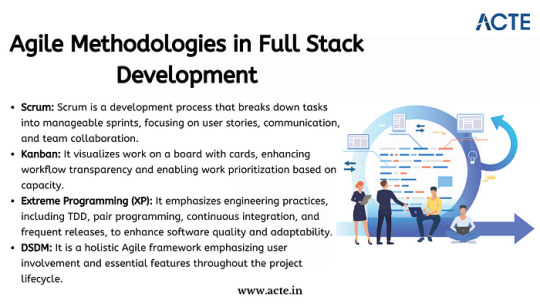
Synergy Between DevOps and Agile
The Power of Collaboration
We will highlight how DevOps and Agile practices complement each other, creating a synergy that streamlines the entire development process. By aligning development, testing, and deployment, this synergy results in faster delivery and higher-quality software.
Tools and Technologies for DevOps in Full Stack Development
Essential DevOps Tools
DevOps relies on a suite of tools and technologies, such as Jenkins, Docker, and Kubernetes, to automate and manage various aspects of the development pipeline. We will provide an overview of these tools and explain how they can be harnessed in Full Stack Development projects.
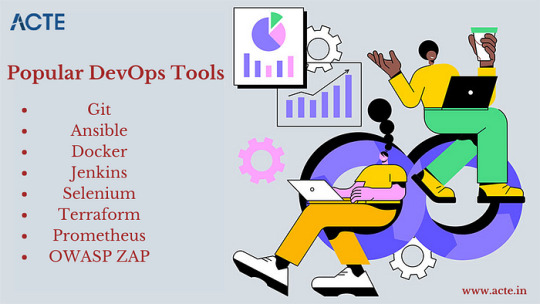
Implementing Agile in Full Stack Projects
Agile Implementation Strategies
We will delve into practical strategies for implementing Agile methodologies in Full Stack projects. Topics will include sprint planning, backlog management, and conducting effective stand-up meetings.
Best Practices for Agile Integration
We will share best practices for incorporating Agile principles into Full Stack Development, ensuring that projects are nimble, adaptable, and responsive to changing requirements.
Learning Resources and Real-World Examples
To gain a deeper understanding, ACTE Institute present case studies and real-world examples of successful Full Stack Development projects that leveraged DevOps and Agile practices. These stories will offer valuable insights into best practices and lessons learned. Consider enrolling in accredited full stack developer training course to increase your full stack proficiency.
Challenges and Solutions
Addressing Common Challenges
No journey is without its obstacles, and Full Stack Developers using DevOps and Agile practices may encounter challenges. We will identify these common roadblocks and provide practical solutions and tips for overcoming them.
Benefits and Outcomes
The Fruits of Collaboration
In this section, we will discuss the tangible benefits and outcomes of integrating DevOps and Agile practices in Full Stack projects. Faster development cycles, improved product quality, and enhanced customer satisfaction are among the rewards.
In conclusion, this blog has explored the dynamic world of Full Stack Development and the pivotal role that DevOps and Agile practices play in achieving success in this field. Full Stack Developers are at the forefront of innovation, and by embracing these methodologies, they can enhance their efficiency, drive project success, and stay ahead in the ever-evolving tech landscape. We emphasize the importance of continuous learning and adaptation, as the tech industry continually evolves. DevOps and Agile practices provide a foundation for success, and we encourage readers to explore further resources, courses, and communities to foster their growth as Full Stack Developers. By doing so, they can contribute to the development of cutting-edge solutions and make a lasting impact in the world of software development.
#web development#full stack developer#devops#agile#education#information#technology#full stack web development#innovation
2 notes
·
View notes
Text

Top Institute for Scrum Master Certification in Chennai
If you’re ready to step into a rewarding Agile career, choosing the best institute for Scrum Master certification in Chennai is your first and most important move.Scrum Masters are in greater demand across a range of industries, including IT, banking, healthcare, and e-commerce. With Agile teams becoming the norm, organizations need professionals who can facilitate collaboration, remove blockers, and drive projects toward meaningful results.
This blog will walk you through why certification is important, the process of starting Agile training, and why Skill Yantra stands at the top if success is what you are looking for. Whether you are a beginner learning the fundamentals of Jira or looking for a SAFe Scrum Master certification, we have you covered.
Why Scrum Master Certification Is Important in the Current Job Market
Scrum is no longer a buzz term—it's an established framework that dictates how teams rapidly deliver value. Your certified Scrum Master is not a mere project coordinator. They are change leaders aware of Agile principles, coordinate sprints, handle team dynamics, and increase continuous improvement.
Certification not only indicates that you are interested, but it also signifies commitment and capabilities.
And as far as how to locate the best institute for Scrum Master certification in Chennai location is secondary to quality. That's where Skill Yantra excels.
Begin with the Fundamentals: Agile Course & Jira
Before you jump into certification, you need a strong foundation in Agile training. Agile is a philosophy—a move away from strict planning toward adaptable collaboration. You study frameworks such as Scrum, Kanban, and SAFe. You learn about concepts such as sprints, user stories, product backlog, and retrospectives.
Agile is not sufficient on its own, though. Tools are important too.
This is why it is strongly suggested that you learn Jira fundamentals. Jira is among the most popular tools for Agile project management. Whether you're monitoring epics and stories or conducting sprint planning sessions, learning Jira skills makes you employable.
Most leading recruiters actively seek candidates who can utilize Jira, so this is a must-have for your Agile arsenal.
What Is SAFe Scrum Master Certification?
If you aspire to work in large corporations or organizations which scale Agile for more than one or two teams, the SAFe Scrum Master certification will prove to be a game-changer. In contrast to simple Scrum, SAFe (Scaled Agile Framework) is for enterprise-level projects having various cross-functional teams collaborating.
SAFe-certified Scrum Masters see the larger picture. They drive Agile across teams, coordinate delivery with business objectives, and make sure that there is communication across all levels of the company.
Skill Yantra provides exclusive coaching in SAFe Scrum Master certification that enables you to make the transition from team-level Agile to enterprise leadership.
Why Chennai's Top Scrum Master Certification Institute Is Skill Yantra
So why is Skill Yantra widely regarded as the best institute for Scrum Master certification in Chennai ?
Here’s what sets it apart:
Certified Trainers with Real-World Experience
Learn from professionals who have worked in Agile transformations across global companies.
Hands-On Learning
Jira basics, will expose you to real-world use cases, such as backlog refining and sprint simulations.
SAFe Certification Preparation
comprehensive instruction and practice exams to get ready for the SAFe Scrum Master certification test..
Job Assistance & Placement Support
Skill Yantra's team provides resume creation, interview preparation, and placement in leading companies.
Online & Offline Learning Options
You're a working professional or a fresh graduate, flexible timing won't let you miss out.
Recognition Across Industries
Skill Yantra is respected by the hiring managers and HR teams seeking certified Agile professionals in Chennai and across the world.
Real Career Benefits of a Scrum Master Certification
When you become certified from the premier institute for best institute for Scrum Master certification in Chennai such as Skill Yantra, your resume shines. Here's why:
Improved Job Opportunities: Leading MNCs prefer certified professionals.
Greater Pay Packages: Certifications can mean a 20-30% pay increase.
Career Change Ready: From programmer to Scrum Master or business analyst to Agile coach.
Leadership Roles in Teams: Certified Scrum Masters tend to transition to leadership sooner than non-certified colleagues.
And with intensive Agile training and hands-on practice working with Jira basics, you're a complete professional.
What You'll Learn at Skill Yantra
At Skill Yantra, becoming a certified professional from a beginner involves:
Agile & Scrum basics
Sprint planning and review methods
Product backlog handling
Working with Agile tools such as Jira basics and Confluence
SAFe Scrum Master certification preparation
Soft skills: servant leadership, facilitation, conflict management
And, Skill Yantra has mini-projects, live situations, and simulation labs to provide you with hands-on experience.
What Past Students Have to Say
"I came to Skill Yantra with no Agile experience. Within four weeks, I had learned from Jira fundamentals to SAFe framework. I passed my exam in my first attempt and got placed in an MNC!" – Meena R., Scrum Master, Chennai
"Must say the best institute to get Scrum Master certified in Chennai. Trainers are helpful, and placement team is excellent." – Rajeev T., Agile Coach
Conclusion: The Right Training Can Change Your Career
Your path to Scrum Master success begins with intelligent decisions. If you're reinforcing Jira fundamentals, getting Agile training, or looking for a SAFe Scrum Master certification, one choice is most important—where you take it.
Selecting the right institute for Scrum Master certification in Chennai is not a matter of hype—it's a matter of results, actual learning, and career change.
And that's why Skill Yantra remains the first choice for every aspiring Scrum Master.
Invest in your self. Learn Agile the right way. Begin your journey with Skill Yantra today.
+91-90361 53201
0 notes
Text
Mastering Jira: The Best Tutorials to Get You Started
In the world of agile project management, Jira has become a household name. Developed by Atlassian, Jira is a powerful tool widely used by software development teams, project managers, and business analysts to plan, track, and manage projects with ease. However, for beginners, navigating Jira’s vast features and configurations can feel overwhelming.
Whether you're a newcomer looking to learn the basics or a professional aiming to master advanced workflows and automation, high-quality Jira tutorials can make a significant difference. In this blog post, we’ll explore what Jira is, why it’s useful, and where you can find some of the best Jira tutorials online — including two standout resources: Sparxsys Solutions and Ravi Sagar's website.
What is Jira?
Jira is a project management tool designed for agile teams. Originally created as a bug-tracking system, it has evolved into a comprehensive platform that supports Scrum, Kanban, SAFe, and hybrid methodologies. Its flexibility allows teams to:
Create user stories and issues
Plan sprints
Track progress with agile boards
Automate repetitive tasks
Generate insightful reports
Integrate with other tools like Confluence, Bitbucket, and more
Jira is not just limited to software teams — marketing, HR, legal, and other departments also use it to streamline their work.
Why Learn Jira?
With more companies adopting agile practices, Jira proficiency is becoming a valuable skill. Here’s why learning Jira is worth your time:
Career growth: Many job roles require at least basic knowledge of Jira.
Efficiency: Knowing how to use Jira properly helps teams deliver faster and more effectively.
Customization: You can configure Jira to match any workflow, from simple task tracking to complex enterprise-level processes.
Certification opportunities: Atlassian offers certifications for Jira admins and users, opening doors for professional development.
Best Places to Learn Jira: Tutorials That Actually Work
There are plenty of Jira tutorials out there, but not all are created equal. If you're serious about learning Jira, you need resources that are practical, beginner-friendly, and regularly updated. Here are two highly recommended sources:
1. Sparxsys Solutions
Sparxsys Solutions is a leading Atlassian consulting company that specializes in helping businesses implement and customize Jira. Their website offers a range of Jira tutorials and consulting services, especially suited for teams looking to adopt Jira at scale.
Why Sparxsys?
Real-world scenarios: Tutorials are based on real client implementations, not just theory.
Clear explanations: They break down complex topics like Jira workflows, custom fields, permission schemes, and post-functions in a way that’s easy to understand.
Videos and blogs: In addition to written guides, Sparxsys also shares insightful videos that walk you through Jira’s key features.
If your organization is planning a Jira rollout or you're a Jira admin looking to refine your configuration, Sparxsys is a great place to start. Their content caters to both beginners and intermediate users.
👉 Visit: https://www.sparxsys.com
2. RaviSagar.in
Ravi Sagar is a Jira expert, Atlassian consultant, and author of Mastering Jira 7. His website, ravisagar.in, is one of the most popular Jira learning hubs on the internet, offering hundreds of blog posts, tutorials, videos, and scripts.
Why Ravi Sagar?
Hands-on guidance: Ravi shares code snippets, automation scripts, and workflow configurations you can use immediately.
Wide range of topics: From Jira Software and Jira Service Management to Scriptrunner and Jira Cloud, Ravi covers it all.
Active community: He frequently updates his site and engages with questions, making it a great platform for continuous learning.
If you're a Jira power user or someone who wants to dive deeper into automation and advanced configurations, Ravi Sagar's tutorials will be incredibly helpful.
👉 Explore tutorials: https://www.ravisagar.in
Tips for Learning Jira Effectively
Here are some tips to make the most of your Jira learning journey:
Start small: Focus on understanding issues, projects, and boards before diving into workflows and schemes.
Practice in a test environment: Create a free Jira Cloud account to explore features without risk.
Follow a project lifecycle: Apply what you learn by managing a small personal or team project from start to finish in Jira.
Use official Atlassian documentation: Combine it with tutorials from Sparxsys and Ravi Sagar for a complete understanding.
Final Thoughts
Learning Jira doesn't have to be difficult. With the right resources, even a complete beginner can become proficient in managing projects using Jira. Whether you’re managing tasks, implementing agile practices, or customizing workflows, gaining Jira skills will set you apart in today’s tech-driven workplace.
Start your journey today with these trusted resources:
🔗 Sparxsys Solutions – Perfect for implementation guidance and real-world tutorials.
🔗 RaviSagar.in – A goldmine for advanced Jira users, admins, and automation enthusiasts.
Happy learning — and may your Jira boards always stay green!
0 notes
Text
Why PHP Development in India Offers the Best ROI for Global Clients
In the modern digital age, companies all over the globe are always searching for intelligent means of developing web solutions without going over budget. This is where PHP development in India excels. Being renowned for providing excellent services at cost-effective prices, Indian PHP firms are assisting overseas clients in optimizing their return on investment (ROI).
Skilled Developers at Competitive Costs
India is home to some of the best PHP development companies offering strong technical expertise. Indian developers are highly skilled in core PHP as well as popular frameworks like Laravel, CodeIgniter, and Symfony. What makes them more attractive is the cost advantage. Compared to the US or Europe, hourly rates for PHP developers in India are significantly lower—without compromising quality.
Proven Track Record of Global Projects
Indian PHP development companies have experience stretching back decades in working with global clients. From Fortune 500 enterprises to start-ups, they've designed intricate web applications, CRMs, and e-commerce platforms across sectors. This global exposure makes them aware of global norms, user patterns, and compliance laws—enabling them to be trusted long-term partners.
Flexible Engagement Models
Dedicated teams, fixed-price contracts, and hourly charging are the most common engagement types offered by Indian PHP firms. This enables companies to adjust development scales according to their present demands. India provides unparalleled flexibility that enables cost-effective expansion, whether one is developing new applications or sustaining current ones.
Strong Communication & Project Management
Slack, Trello, and Zoom are just a few of the digital technologies that have made collaborating with Indian teams much easier. Open lines of contact, weekly updates, and milestone monitoring are hallmarks of the top PHP development firms in India. Rapid iteration and responsiveness to change are hallmarks of their Agile or Scrum practices.
Support & Maintenance at Lower Costs
Applications require ongoing care even after they have been released. Again, for a lower price, developers in India offer regular maintenance and upgrades. Reduced expenses in the long run leads to a higher return on investment.
Conclusion
When it comes to balancing quality, expertise, and cost, PHP development in India delivers some of the best value globally. By choosing the right development partner, businesses can cut costs without cutting corners—ensuring reliable, scalable, and future-ready digital solutions.
0 notes
Text
With a focus on Agile principles, the Agile Scrum certification equips you with the necessary skills to effectively collaborate, adapt, and deliver high-quality projects using Agile Scrum frameworks. GSDC Certified Agile Scrum Foundation certification is designed to validate your knowledge and understanding of Agile Scrum methodologies.Agile Scrum certification demonstrates your proficiency in Agile and Scrum practices, making you a valuable asset in today's rapidly evolving business environment.
The GSDC Certified Agile Scrum Foundation provides a solid foundation for individuals seeking to enhance their career prospects and contribute to the success of Agile-driven organizations.By obtaining this Agile foundation certification, you gain recognition for your expertise in Agile Scrum and become equipped to lead teams, enhance productivity, and deliver customer-centric solutions.
#casf#certified agile scrum foundation#asf certification#agile scrum best practices#agile scrum foundation#scrum foundation exam#agile scrum foundation certification#agile scrum certification#agile and scrum foundation certification
0 notes
Text
Who is a Scrum Master and what they do? #agile #scrummaster #scrum
In the fast-paced realm of agile project management, the Scrum Master wields considerable influence over a team’s success. Far more than a mere facilitator, they are a guiding force, driving collaboration and efficiency. In this blog, we will explore ten real-life examples of how a Scrum Master fulfills their roles and responsibilities, showcasing the practical significance of their contributions…

View On WordPress
#Agile Best Practices#Agile Coaching#Agile Mentoring#Agile Project Management#collaboration#Conflict Resolution#Continuous Improvement#Daily Standups#Development Team#Impediment Removal#Metrics Tracking#Product Owner#Scrum Framework#Scrum Master#Servant Leadership#Sprint Planning#Sprint Retrospective#Sprint Review#Stakeholder Engagement.
0 notes
Text
What to Expect from Top QA Software Testing Courses?
In the dynamic and rapidly evolving IT landscape, Quality Assurance (QA) software testing has emerged as a crucial discipline that ensures software products meet the highest standards before they reach end users. The role of a QA tester is integral to any software development lifecycle, making QA professionals highly sought after. However, with numerous QA software testing courses available, knowing exactly what to expect from top-tier courses can be a daunting task.
This comprehensive guide sheds light on the essential elements you should anticipate from premier QA software testing courses, ensuring you gain maximum value and set yourself up for career success.
Comprehensive Curriculum Covering Fundamental Concepts
Top QA software testing courses provide a detailed curriculum covering the core concepts of software testing, equipping learners with foundational knowledge. Expect to delve into topics such as:
Software Testing Basics: Understanding the principles, concepts, and importance of software testing.
Types of Testing: Explorations into manual testing, automated testing, functional and non-functional testing, regression testing, usability testing, and performance testing.
Software Development Life Cycle (SDLC) and Software Testing Life Cycle (STLC): Deep dive into methodologies including Agile, Scrum, Waterfall, and their relation to QA.
Defect Life Cycle Management: Learning to track, document, and manage software defects effectively.
A well-rounded course ensures you grasp not just theoretical knowledge but also how to practically apply these fundamentals in real-world scenarios.
Extensive Hands-On Experience and Real-World Projects
Expect to engage in extensive hands-on projects when enrolling in a quality QA software testing course. Practical application of concepts learned in the classroom is critical. Courses often include:
Project-Based Assignments: These involve working on actual software applications, conducting tests, and reporting bugs.
Interactive Labs: Use of industry-standard tools in simulated environments to replicate real-world QA testing scenarios.
Capstone Projects: Large-scale projects designed to showcase your cumulative learning, often mirroring real industry challenges.
Such hands-on experiences solidify theoretical concepts and enhance practical problem-solving skills, making you job-ready upon course completion.
Proficiency in Industry-Leading QA Testing Tools
Top QA courses will familiarize you with the latest and most widely used software testing tools. These tools help automate, streamline, and efficiently execute QA processes. Expect to gain proficiency in tools such as:
Selenium: For automated web browser testing.
JIRA: To manage test cases and defect tracking.
TestRail: For comprehensive test management.
JMeter and LoadRunner: For performance testing.
Postman: For API testing.
Mastering these tools ensures you're not only aware of the industry's best practices but also competent in executing them effectively in professional settings.
Expert Instruction from Industry Professionals
Top QA software testing courses are often distinguished by their instructors. Expect your training to be delivered by experienced professionals who:
Hold substantial real-world QA industry experience.
Have worked on diverse and complex projects.
Understand current market demands and the latest trends.
Provide practical tips and career guidance based on first-hand experiences.
Such mentorship helps bridge the gap between theoretical knowledge and industry expectations, offering invaluable insights for career advancement.
Robust Course Structure and Clear Learning Outcomes
Premier QA courses offer clear and organized curricula with structured modules, each targeting specific learning outcomes. Expect:
Clearly Defined Goals: Each course segment should outline precisely what knowledge and skills you will acquire.
Regular Assessments: Quizzes, assignments, and periodic tests to measure your progress.
Interactive Learning: Opportunities to engage in group discussions, forums, and collaborative exercises to reinforce learning.
This organized approach ensures consistent progress and clarity about your skill development throughout the course.
Preparation for Industry Certifications
Many top-tier QA software testing courses align their content with industry-recognized certifications, such as:
ISTQB (International Software Testing Qualifications Board)
Certified Software Tester (CSTE)
Certified Associate in Software Testing (CAST)
Expect dedicated sessions or modules that specifically prepare you for these examinations, greatly enhancing your professional credibility and employability.
Flexible Learning Formats
Recognizing diverse learner needs, top courses offer various formats such as:
Online and In-Person Options: Catering to those preferring either face-to-face interaction or flexible, remote learning.
Part-time and Full-time Scheduling: Allowing you to choose courses that fit your lifestyle, whether you're a working professional or a full-time learner.
Flexibility ensures that learning is accessible, regardless of your personal circumstances or professional commitments.
Personalized Career Support and Job Placement Assistance
Top courses go beyond teaching; they actively assist you in career development. Expect support including:
Resume Preparation: Personalized guidance on crafting professional resumes tailored specifically for QA roles.
Interview Training: Sessions on mastering QA job interviews, focusing on both technical and behavioral aspects.
Job Placement Assistance: Connections to internships, entry-level positions, and networking opportunities within the QA testing industry.
This holistic support significantly improves your chances of landing a desirable job in QA testing.
Strong Community and Networking Opportunities
Enrollment in reputable Quality assurance courses online often grants you access to vibrant communities. Expect:
Alumni Networks: Active alumni communities provide mentorship and share job opportunities.
Industry Connections: Networking events, webinars, and workshops that introduce you to industry leaders.
Peer Learning: Opportunities to collaborate with classmates on projects, discuss industry trends, and build long-lasting professional relationships.
These networks can open doors to numerous career opportunities and continual professional growth.
Continuous Learning Resources and Lifetime Access
Top courses provide access to ongoing resources, even post-completion. This usually includes:
Resource Libraries: Access to up-to-date materials, case studies, and the latest research.
Refresher Content: Availability of refresher courses or updated modules to ensure your skills stay relevant as the industry evolves.
Community Forums: Continuous engagement through forums and discussion boards for lifelong learning and skill enhancement.
Such resources ensure your skills remain sharp, relevant, and aligned with market needs.
Conclusion
Enrolling in a top QA software testing course offers a comprehensive, structured, and highly practical learning experience. By expecting and selecting courses that include a robust curriculum, hands-on projects, professional tools proficiency, industry expert instruction, certification preparation, flexible learning, personalized career assistance, strong community engagement, and continuous learning resources, you set yourself on a clear path to a successful and rewarding career in QA software testing.
Investing in your education through a reputable QA testing course can indeed be transformative, elevating your professional capabilities and opening doors to endless career opportunities in the dynamic world of software development.
0 notes
Text
Vabro: Your All-In-One Solution for Agile Product Development!
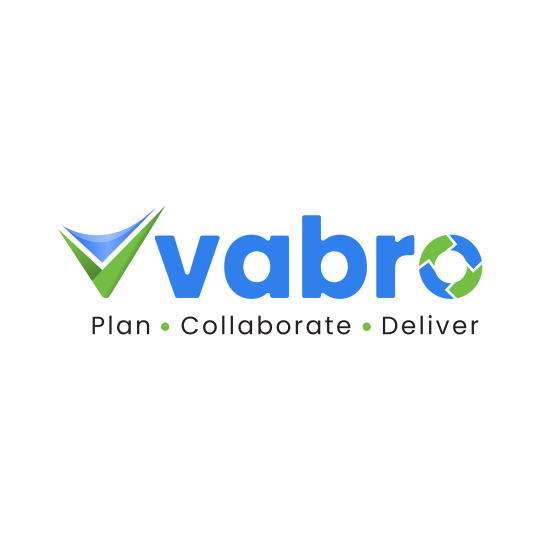
🚀🚀 Introducing Vabro: Your All-In-One Solution for Agile Product Development! Are you ready to take your project management to the next level? Meet Vabro, the ultimate platform designed to supercharge your Agile workflows and maximize team productivity. Here's a sneak peek into what Vabro has to offer: ✅ Seamless SCRUM Integration: Harness the power of the Scrum Framework with Vabro's intuitive features, enabling you to streamline project planning, execution, and delivery. ✅ Robust DevOps Collaboration: Embrace a culture of collaboration and continuous delivery with Vabro's seamless integration of DevOps principles, ensuring a smooth and efficient workflow for your teams. ✅ Customizable Agile Workflows: Tailor your project management experience with Vabro's customizable workflows, allowing you to adapt to the unique requirements of your projects and teams effortlessly. ✅ Real-Time Task Tracking: Stay on top of your tasks with Vabro's real-time tracking, enabling you to monitor progress, identify bottlenecks, and ensure timely project delivery. ✅ Enhanced Team Collaboration: Foster a culture of transparency and accountability with Vabro's collaborative tools, empowering your teams to work together seamlessly and achieve remarkable results. Join us on this exciting journey of elevating your project management experience. Visit www.vabro.com to learn more about Vabro and how it can transform the way your team works! Stay tuned for more insights and best practices on Scrum and Agile methodologies.
#Vabro#scrumstudy#AgileProjectManagement#AgileProductDevelopment#SCRUM#DevOps#TeamCollaboration#ProjectDelivery#ProductivityBoost
2 notes
·
View notes
Text
Advance Your Agile Career with PSM 2 Certification

In today's rapidly evolving business environment, agile practices are a necessity for organizations that aspire to remain competitive and responsive. The PSM 2 Certification, or Professional Scrum Master™ II, is a highly respected certificate offered by Scrum.org to individuals who already have a solid grounding of Scrum knowledge. This advanced-level certificate is for experienced Scrum Masters who aim to reinforce their knowledge, advance their leadership further, and ease Scrum teams well in intricate settings.
PSM 2 Certification is an extension of the learning that is done under the PSM I test but delves deeper into the real application of Scrum concepts. It emphasizes the servant-leader and mentorship role of the Scrum Master and, in specific detail, how to deal with real-world problems such as team dynamics, organizational pushback, and stakeholder management. It will suit those who are not just applying Scrum by the letter but are coaching teams and organizations to ongoing improvement and enterprise-scale agility.
What is the PSM 2 Certification?
The PSM 2 Certification is an intermediate-to-advanced level certification that shows your ability to apply Scrum theory in real, professional situations. While PSM I tests your Scrum principles and framework knowledge, PSM II tests your decision-making and exercising judgment when the answer is not obvious. This includes facilitation of the Product Owner, enabling self-managed teams, and dealing with organisational complexities. Professionals are required to have complete knowledge of Scrum values, roles, events, and artefacts, along with an agile mindset, in order to succeed.
Although it is not necessary to take a course before sitting for the PSM 2 exam, most professionals find it well worth their time to take a formal training program. Such programs are typically scenario-based and interactive, permitting candidates to apply theory to real-life workplace situations. The test itself is an open-book, internet test consisting of multiple-choice, multiple-answer, and true/false questions and requires a high pass rate of 85%.
Why is the PSM 2 Certification Important?
Acquiring the PSM 2 Certification is not just theory—it shows that you can guide, mentor, and lead agile teams through change and ambiguity. Organizations increasingly seek certified Scrum professionals who are not only knowledgeable about how Scrum works but also can act as change agents. With PSM II, you demonstrate a solid demonstration of Scrum values of commitment, courage, focus, openness, and respect. That makes you a great asset to any agile team.
Professionally, PSM II separates you from the pack. It enhances your CV while looking for roles such as Senior Scrum Master, Agile Coach, or Product Delivery Manager. The majority of organizations consider the certification a sign of better agile skills and leadership abilities. Additionally, certified professionals often receive higher paying opportunities, increased decision-influence, and an opportunity to shape agile cultures within their organizations.
How to Prepare for the PSM 2 Exam
Preparation for the PSM 2 exam must be more than rote memorization. More than trivial critical thinking is required. There must be deep critical thinking as well as the ability to apply Scrum in uncertain, often imperfect conditions. The best beginning is to study the latest Scrum Guide thoroughly, since it is the basis of the test content. With knowledge of every section, from how the roles work together to how Scrum supports empirical process control, success is guaranteed.
Next, it is helpful to participate in community discussions, forums, or study groups where Scrum practitioners share insights and clarify doubts. Reading advanced agile literature and case studies can also broaden your perspective. Finally, attempting sample questions or enrolling in a PSM II-focused training course can offer practical exposure and highlight areas for improvement. Consistent learning, hands-on experience, and critical reflection are essential components of a solid study plan.
Significant Benefits of the PSM 2 Certificate
There are various benefits to earning the PSM 2 Certificate. To begin with, it validates your Scrum and leadership abilities as well as your ability to excel in agile teams. It enhances your coaching abilities, particularly in terms of facilitating collaboration, removing obstructions, and facilitates higher team performance and improved organizational results.
Second, the certification enhances your credibility in the agile job market. It is proof that you are well-versed in best-of-breed Scrum practices and can guide teams through complex agile transformations. Finally, PSM II supports individual growth by driving a mindset change from work to enabling people. This vision is invaluable to initiating long-term change and the development of innovation.
Who Should Pursue the PSM 2 Certification?
The PSM 2 Certification is ideal for advanced Scrum Masters, agile professionals, team leads, and project managers who must enhance their Scrum competencies. It is ideally suited best for experts already practicing Scrum and who desire to add more value to their job in the organization. If you are an individual who desires to mentor others, facilitate agile adoption, or be in charge of large-scale Scrum deployments, then PSM II is a strategic investment.
It is an excellent choice also for those interested in becoming agile coaches or consultants as it provides a good foundation for facilitating organizational change and developing agile capabilities at all levels. If you work in IT, software development, marketing, or operations, this certification enables you to lead and adapt in any rapidly changing environment.
Conclusion
PSM 2 Certification isn't merely a professional standard—it's an endorsement of your ability for critical thinking, responsible behavior, and assertive leadership in Scrum environments. With this certification, you're asserting yourself as a solid and dependable leader who can handle the realities of real-world Scrum adoption. With companies relying more and more on agile approaches to remain competitive, certified Scrum experts such as yourself will be at the forefront of creating lasting change and delivering value on a consistent basis.
If you’re ready to grow your impact, challenge your understanding, and take the next step in your agile journey, the PSM 2 Certification is the perfect path forward.
0 notes